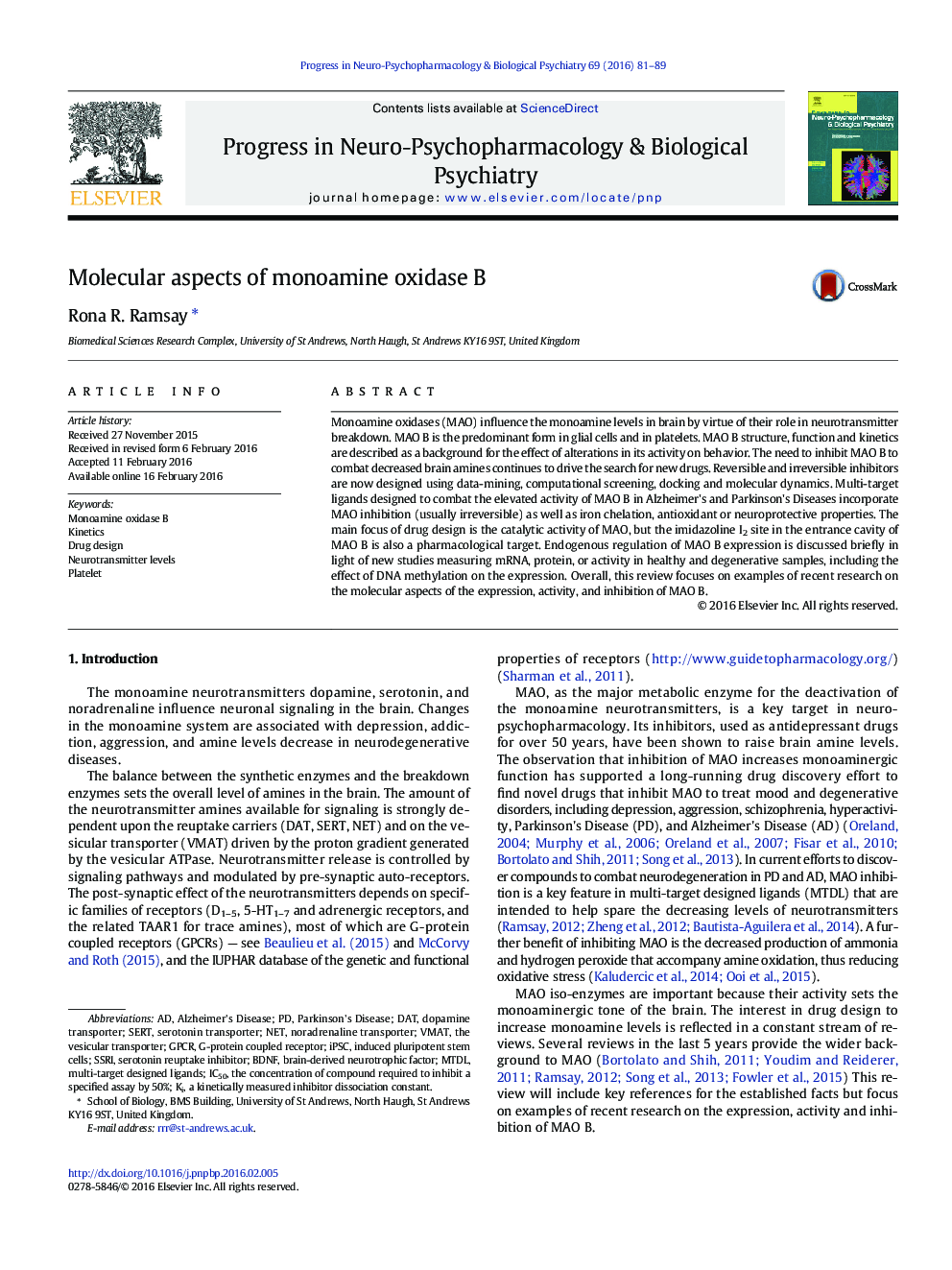| Article ID | Journal | Published Year | Pages | File Type |
|---|---|---|---|---|
| 2564688 | Progress in Neuro-Psychopharmacology and Biological Psychiatry | 2016 | 9 Pages |
•MAO B activity depends on both amine and oxygen concentrations.•Expression, activity, and regulation of MAO B are discussed.•MAO B is elevated in Alzheimer's and Parkinson's Diseases.•Irreversible modification of MAO B by drugs against neurodegeneration•Structure-based multi-target drug design and computational approaches
Monoamine oxidases (MAO) influence the monoamine levels in brain by virtue of their role in neurotransmitter breakdown. MAO B is the predominant form in glial cells and in platelets. MAO B structure, function and kinetics are described as a background for the effect of alterations in its activity on behavior. The need to inhibit MAO B to combat decreased brain amines continues to drive the search for new drugs. Reversible and irreversible inhibitors are now designed using data-mining, computational screening, docking and molecular dynamics. Multi-target ligands designed to combat the elevated activity of MAO B in Alzheimer's and Parkinson's Diseases incorporate MAO inhibition (usually irreversible) as well as iron chelation, antioxidant or neuroprotective properties. The main focus of drug design is the catalytic activity of MAO, but the imidazoline I2 site in the entrance cavity of MAO B is also a pharmacological target. Endogenous regulation of MAO B expression is discussed briefly in light of new studies measuring mRNA, protein, or activity in healthy and degenerative samples, including the effect of DNA methylation on the expression. Overall, this review focuses on examples of recent research on the molecular aspects of the expression, activity, and inhibition of MAO B.
Graphical abstractFigure optionsDownload full-size imageDownload as PowerPoint slide
